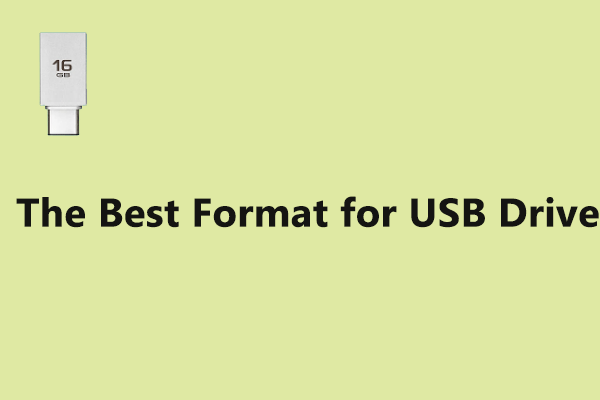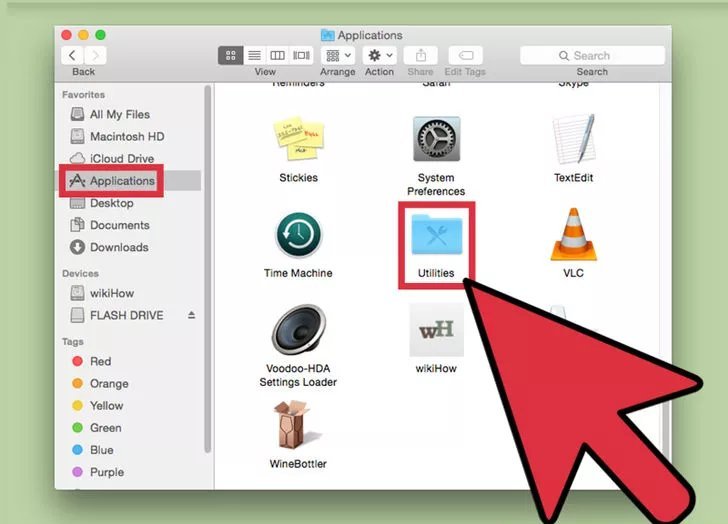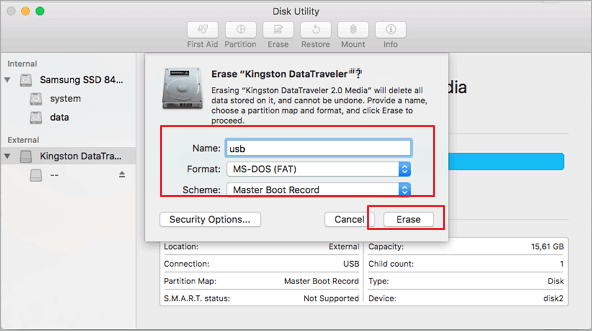

- #Format the usb for a mac how to#
- #Format the usb for a mac mac os#
- #Format the usb for a mac install#
- #Format the usb for a mac update#
- #Format the usb for a mac password#
#Format the usb for a mac update#
If you want a non-English-language version of Windows, or want to get an older update version, download the ISO here instead. If you're not sure, go with the 32-bit version to be safe. If you have a relatively new computer, you probably want the 64-bit version. If you want an English-language version of the latest update of Windows 10, you can download the ISO here. That's right - everything we're going to do here is 100% legal and sanctioned by Microsoft. You can download the ISO file straight from Windows.

In this tutorial we'll show you how you can set this up from a Mac.
#Format the usb for a mac install#
Luckily, Microsoft makes a tool that you can use to install Windows from a USB storage drive (or "thumbdrive" as they are often called).īut what if you don't have a second PC for setting up that USB storage drive in the first place?


So it can be a pain to install Windows on a new computer. Once the process is complete, copy across your sensitive data to the blank USB flash drive, where it will be automatically encrypted and secured with a password.Most new PCs don't come with DVD drives anymore.
#Format the usb for a mac password#
#Format the usb for a mac mac os#
#Format the usb for a mac how to#
How to Encrypt a USB Flash Drive in Disk Utilityīefore proceeding, make sure you've copied any data on the USB flash drive to a safe location, like your Mac's internal disk. If you ever want to decrypt the USB flash drive in future, right-click (or Ctrl-click) its disk icon, select Decrypt "" from the contextual menu, and enter the password to turn off encryption protection. Check the box, and whenever you attach the USB stick to your Mac again you won't be prompted to enter the password and you'll have automatic access to it, just like any other drive. Note that the prompt includes an option for macOS to remember this password in my keychain. You'll now be able to access the contents of the USB flash drive as usual, but if you physically detach it and re-attach it to your Mac you'll be prompted to enter the password. The encryption process depends on how much data you have on the USB flash drive, but you'll know it's completed when its disk icon disappears and re-mounts. (Don't forget this, otherwise you'll lose access to any data stored on the USB drive!) Once you've chosen a password, verify it, add a meaningful hint if desired, and click Encrypt Disk. When you select Encrypt, Finder will prompt you to create a password, which you'll need to enter the next time you attach the USB flash drive to a Mac. To resolve this, you'll need to erase and encrypt the USB drive in Disk Utility – before that though, copy any data on the drive to another location for temporary safekeeping.) (Note that if you don't see the Encrypt option in the dropdown menu, your USB flash drive hasn't been formatted with a GUID partition map. With that in mind, here's how to securely encrypt your USB flash drive.Īttach the USB flash drive to your Mac and locate its disk icon on your desktop, in a Finder window, or in the Finder sidebar, then right-click (or Ctrl-click) it and select Encrypt "". If this is a requirement, you'll need to use a third-party encryption solution like VeraCrypt. Note that the following method is only compatible with Macs – you won't be able to access data on the encrypted drive using a Windows machine. Using this convenient Finder option, we're going to show you how to encrypt a USB flash drive (or "thumb drive"), which is useful if you're traveling light and want to take sensitive data with you for use on another Mac.įinder uses XTS-AES encryption, the same encryption that FileVault 2 uses to prevent access to data on a Mac's startup disk without a password. In macOS Mojave, you can choose to encrypt and decrypt disks on the fly right from the desktop.


 0 kommentar(er)
0 kommentar(er)
